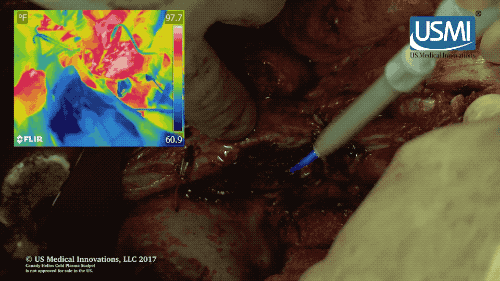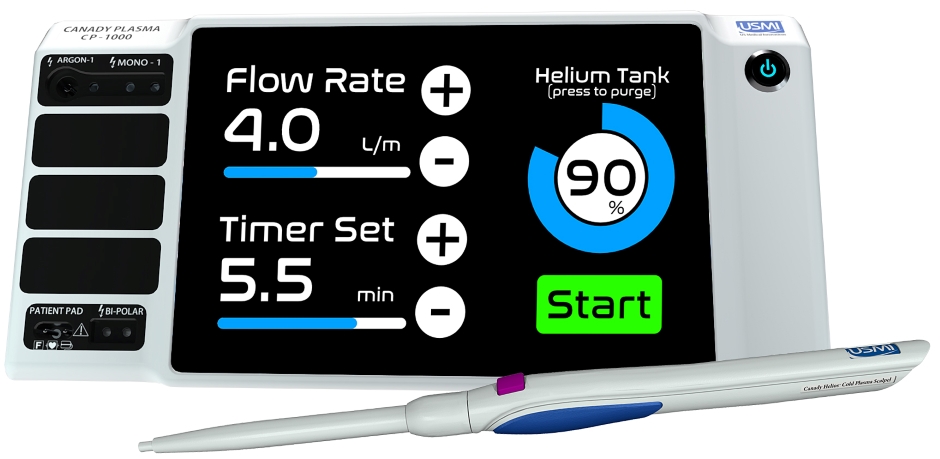
Treatments for solid tumour cancers include chemotherapy, radiation and surgery, but tumours can return if not fully removed. In the US alone, around 20-40 per cent of women undergoing partial mastectomy return to surgery because of marginal tumours that the surgeon missed the first time around.
Now, a multi-institute team has developed a pen-like electrosurgical scalpel that sprays a blue jet of cold plasma at any remaining cancerous tissue or cells for 2-7 minutes. The device is said to only target tumours, leaving surrounding tissue unharmed, as demonstrated in vitro, in vivo and in FDA-approved compassionate use cases prior to the clinical trial.
US Medical Innovations (USMI) and the Jerome Canady Research Institute for Advanced Biological and Technological Sciences (JCRI/ABTS) led the team and are sponsoring the clinical trial, with plans to recruit patients in September. USMI developed and patented the first high-frequency electrosurgical generator with cold plasma for the selective treatment of cancer in 2014.
“Plasmas are very reactive, which can cause a variety of responses on the cellular level in biological tissue. But because they’re also extremely hot gases, there had been a push over the past 20 years to generate and test cold plasmas for biological applications,” said team member Alexey Shashurin, an assistant professor in Purdue University’s School of Aeronautics and Astronautics.
In 2008, Shashurin and Prof Michael Keidar, from The George Washington University, were among an early wave of researchers to develop a cold plasma generator and by 2011 the team had published a paper in the Journal of Cancer showing that cold plasma selectively kills cancer cells in animal models.

Keidar and Shashurin began consulting with USMI in 2013 on creating an industrial-scale prototype of the cold plasma generator and its application for cancer treatment, based on their patented generator. The goal was to integrate cold plasma with Canady Hybrid Plasma electrosurgical scalpels, which simultaneously cut and coagulate tissue, sealing off blood vessels.
This cold plasma technology selectively kills tumours through toxic molecules called reactive oxygen species, which damage targeted cancerous tissue but do not affect normal biological tissue. Lasers could also kill tissue, but the high heat would also bring permanent damage to surrounding tissue.
To bridge the advantages of electrosurgical scalpels with cold plasma, JCRI/ABTS and USMI converted standard high-frequency electrosurgical generators into ones that spray cold plasma.
“Cold plasma application is the fourth arm for the treatment of cancer, following chemotherapy, radiation and surgery. There’s no other ‘magic bullet’ out there for killing off residual tissue,” Canady said in a statement.
One of the clinical trial sites for this device will be Rush University in Chicago. Meanwhile, Shashurin’s lab at Purdue will continue to collaborate with USMI on further development of this technology.




Labour pledge to tackle four key barriers in UK energy transition
I'm all for clarity and would welcome anyone who can enlighten me about what Labour's plans are for the size and scale of this Great British Energy....